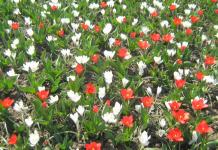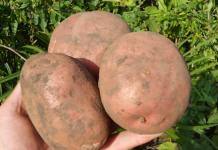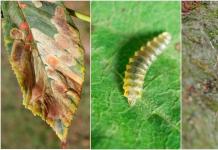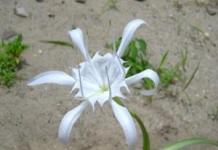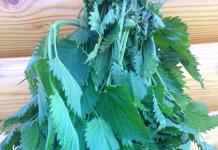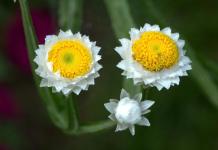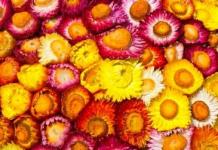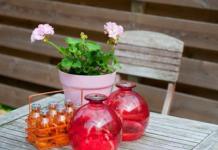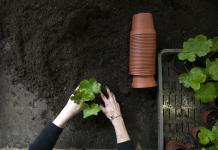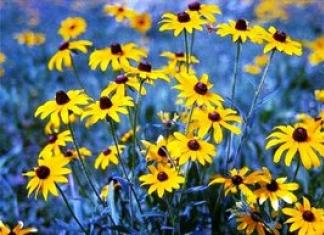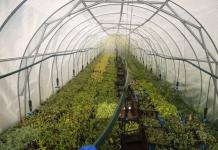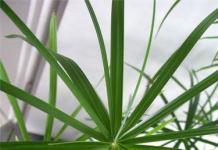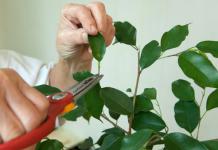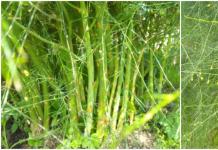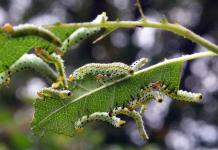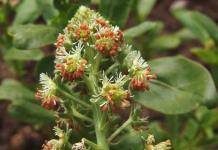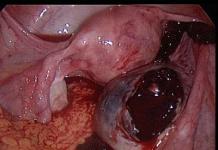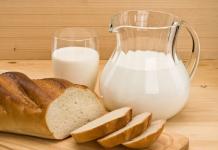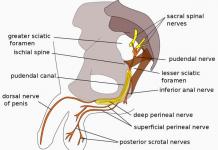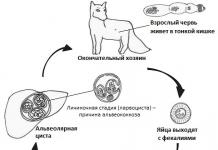From the internet ... FEEDING THE PLANTS
If in the spring the lilies have crawled out of the ground by 10-15 cm, this means that the soil has warmed up enough and you can feed the plants. After all, they cannot assimilate fertilizers from cold soil when its temperature is below six degrees.
Phlox podkomok scheme
The first dry dressing is carried out during the regrowth of the stems. For two or three bushes, take a bucket of compost or humus with the addition of two tablespoons of urea. Everything is thoroughly mixed and scattered around the bushes. If there is not enough moisture in the soil and there is no rain, a liquid top dressing is done: 2 tbsp is diluted in 10 liters of water. tablespoons of urea. During budding: 2 tbsp is diluted in 10 liters of water. tablespoons of nitrophoska or st. spoon "Agricola" or "Kemira" for flowering plants. The third feeding is carried out after flowering. For 10 liters of water take 1 tbsp. spoon of superphosphate and potassium sulfate. Liquid top dressing can be replaced with dry dressing. Again, add 2 tablespoons to 1 bucket of compost or peat. spoons of fertilizer "Kemira" (Autumn) or 2st. tablespoons of phosphorus-potassium mixture, stir thoroughly. A bucket of mixture is enough to pour under 3-4 bushes.
In the spring, after pruning, with the beginning of swelling of the buds, rotted manure (or bird droppings) and complex mineral fertilizer are applied. At the initial stage of shoot growth, liquid feeding is given with mullein infusion, and during the budding period, with bird droppings.
After the first flowering, but no later than the end of July, garden compost and complex mineral fertilizer are applied. In late August - early September (after the second flowering) dry top dressing with ash is given. From mineral fertilizers, superphosphate (30 - 40 g per square meter) and potassium salt (15 - 20 g per square meter) are applied

If complex fertilizers are introduced into the soil, then in the first year the lilies need not be fed. But since they grow in one place for 4 years, we feed the old plantings after watering or rain. The first type of feeding is a solution of calcium nitrate, repeat twice with an interval of 10 days. The second type of feeding "Kemir", preferably with a solution. You can start dissolving the usual kemira a day before feeding. Kemira Lux dissolves well, but it is expensive. To feed, too, once every 10-14 days before the start of mass flowering Before the very beginning of flowering, during budding - to feed with kalimagnesia, it is believed that magnesium gives brightness to flowers. After flowering - superphosphate dissolved in hot water. Sprinkling superphosphate is useless, the lilies will not have time to assimilate it until the end of the growing season. or some kind of fertilizer where there is a lot of potassium and phosphorus. type "Kemira" (autumn).
Gladioli (recommendations by S. A Shishkina)
Corms. The first feeding after the second leaf has grown is carried out with urea or ammonium nitrate 25-30 g per sq. M. Then, in the phase of 3-4 leaves - 15-20 g of urea and 20-25 g of potassium sulfate. The third top dressing in the phase of peduncle emergence - 5-10 g of urea, 40 g of superphosphate, 30-35 g of potassium sulfate per 1 sq. M. The last feeding - at the height of flowering or immediately after it, 40-45 g of superphosphate and 30 g of potassium sulfate. Children. The first feeding in the phase of development of the second leaf with potassium nitrate 30-40 g per 1 sq. m or 15-20 g of urea and 35-40 g of potassium sulfate. The following dressings are carried out every 10 days with the same composition. After the appearance of the fifth leaf, the dosage is as follows: 5-10 g of urea, 40 g of superphosphate, 20-25 g of potassium sulfate. From the second half of August, the dosage changes again: 5 g of urea, 40-45 g of superphosphate, 20-25 g of potassium sulfate. 15-20 days before harvesting, the last feeding is carried out: 30-40 g of superphosphate.
Siberian irises
In the early spring, apply Kemiru-wagon under loosening. Do not overfeed, they winter badly.
Clematis(recommendations of I. B. Lvova)
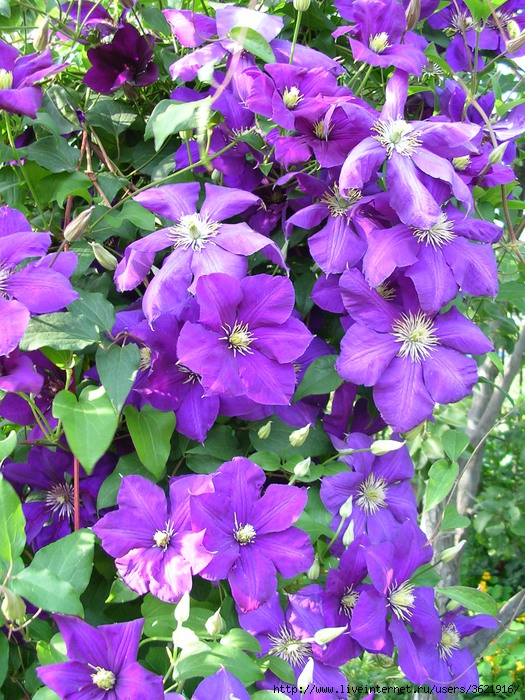
Feed 2-3 times per season. The first thing to do in the spring is to spill all clematis with milk of lime (about a can of 0.5 liters per 10 liters of water) Slaked lime or dolomite is used to prepare milk of lime. It is better to dilute with warm water (well warm) and spill immediately. This is so that there would be no diseases. including the scourge of clematis - wilt.
Two weeks later, we feed them with nitrogen fertilizers. A handful of urea or ammonium nitrate in a bucket of water. If the bush is large - the whole bucket, if small - half. The same irrigation rates for milk of lime.
In the budding phase - complete complex fertilizer... In autumn - potash and phosphorus.
Lilac

The introduction of a large amount of nitrogen (overfeeding) has a bad effect on the wintering of plants and leads to poor, weak flowering. In the spring, you need to add a little nitrogen, after flowering - phosphorus and potassium. It responds well to the introduction of ash (at any time) and dolomite flour (in autumn).
Rhododendrons
In the spring, scatter 20-30 grams of this mixture over the snow: 40 grams of ammonium sulfate and 20 grams of potassium sulfate, 20 grams of superphosphate - mix. The first feeding is in early spring. The next time - before flowering, then, 2 - 3 weeks after flowering, but no later than mid-August. In the spring - a bred mullein. In summer - mullein with the addition of potassium and phosphorus; In late autumn - phosphorus and potassium. Do not use urea! Do not pour potassium permanganate! Chlorine is not acceptable! Potassium-phosphorus buffer maintains acidity. We take for 10 liters of water 8 g of potassium nitrate and 8 g of potassium phosphate (8 g - 1 teaspoon without a slide). Watering - one bucket for two adult plants (5-6 years old) or for 3 young ones.
Acidifying food: ammonium sulfate, superphosphate, magnesium sulfate, potassium sulfate, potassium nitrate.
Peonies

If the landing pit is filled correctly, the podkomka can be carried out starting from the third year. Immediately after the beginning of the regrowth of the leaves, spray the plant with a solution of urea 40-50 g diluted in 10 liters of water. Take a glass of beer in the spring. Dilute it in a bucket of water and pour over the peony. He will thank you. Peonies are very demanding on organic fertilizers, so every spring pour good humus, compost, ready-made flower-soil mixtures under the bush at the rate of 1 bucket per bush (this is about a 10 cm layer of mulch). During 6utonization, they are fed with the following solution: two tablespoons of nitrophoska, one liter of mushy mullein (it can be replaced with 2 tablespoons of "Agricola for flowering plants") is diluted into 10 liters of water. Consumption of the solution is six to seven liters per bush. During the budding period, it is also recommended to spray with the growth regulator "Bud" (10 g per 10 l of water). Sprinkle around the bush wood ash at the rate of 1-2 glasses. After flowering - 20 g of potash fertilizers and 15-20 g of phosphorus fertilizers per adult bush. This stimulates the development of renewal buds. Peony 1 glutton - it must be well fed. even recommend pouring "blood water"
Tulips
If planted in well-prepared soil, then you can not be zealous with top dressing. If you don't eat, then we will definitely feed! In the spring, the soil must be loosened and full of mineral fertilizer added at the rate of 30 - 40 g per 1 sq. m. The second same top dressing is carried out during the deployment of the third leaf. During the appearance of the buds, they feed 20 g of superphosphate per sq. m When the plants fade, they are fed again (15 g of potassium sulfate per 1 sq. m). It is advisable to combine top dressing with watering. Boron and zinc have a positive effect not only on the number of flowers, but also contribute to an increase in the percentage of large, full-bodied bulbs suitable for forcing. It is recommended to use boric acid (10 mg per 100 ml) and zinc sulfate (30 mg per 100 ml) as boric and zinc microfertilizers, which dissolve well in water and quickly penetrate into plant tissues. The consumption rate of the solution is 0.5 liters per 10 square meters. m. It is best to process plants in the budding and flowering phase, since physiological and biological processes are activated during this period
Daffodils

If the soil is properly filled, when planting in the first year, you do not need to feed. Daffodils - a culture primarily of nitrogen-potassium nutrition The first time daffodils are fed in the spring, at seedlings. For example, nitroammophos is introduced - 30 g per sq m, but not more, since an excess of nitrogen causes the development of diseases and the growth of too tall, narrow, weak leaves. You can use the Kemira complex fertilizer by dissolving a tablespoon of fertilizer in 10 liters of water. The second feeding of daffodils is carried out with nitrogen and potassium in the phase of peduncle emergence - up to 50 g per sq. m. The third - with nitrogen, phosphorus and potassium during full budding, you can again feed it with kemira
During flowering - double superphosphate (20 g) and potassium sulfate (30 g). In no case should you fertilize daffodils with fresh manure, because it attracts the most dangerous pest of this culture - the daffodil fly, or the onion hoverfly. In mid-August, they again give 50 g of nitrophoska. Such food relies on daffodils every year, only in the year of digging the last feeding is excluded
Hyacinth
The first feeding is carried out at the beginning of the growing season immediately after the emergence of sprouts. Per sq. m is scattered over a tablespoon of urea and nitrophosphate. The second feeding is carried out after the buds appear. To 10 liters of water, dilute 1 teaspoon of urea, superphosphate, potassium sulfate and Agricola-7. The third feeding is carried out after the end of flowering. For 10 liters of water, dilute 1 tablespoon of superphosphate, potassium sulfate or 2 tablespoons of nitrophoska fertilizer. Solution consumption - 5 liters per 1 sq. m.
Crocuses
They love the soil rich in leafy tracts. When the leaves reach their maximum length, fertilize with potash and phosphorus fertilizers (1: 1) at a dose of not more than 40 g per sq m, and stop watering. This promotes better maturation of corms and flower formation during summer dormancy.
small-bulbous
top dressing on snow with carbamide (15 g per sq m) and complete complex fertilization during the growing season. You can sprinkle with ashes, because most small-bulbous plants like neural soils
Bearded irises
If irises have not been covered since autumn, then fertilizing is carried out with nitrogen and potash (preferably granular) fertilizers over the snow. Such feeding helps to start active growth.In general, irises need at least three additional feeding mineral fertilizers for the season. The first feeding with the ratio of the main elements (nitrogen, phosphorus, potassium) 3: 2: 2.5 is done at the beginning of the growing season. The second feeding two to three weeks after the beginning of the growing season, at the peak of the first wave of growth (budding period), is applied with a ratio of the main elements (nitrogen, phosphorus, potassium) 1: 2: 3. This allows you to increase the number and size of buds of future flowers. The third top dressing is three weeks after the end of flowering. At the end of flowering, irises enter a dormant period - growth processes slow down sharply. Three weeks after this, new root growth begins. At the beginning of this period, phosphorus-potassium fertilizers are applied with the ratio of the main elements (phosphorus, potassium) 2: 3. This top dressing is especially important, since it falls on the period of growth of new links of the rhizome, roots and flower buds. Fertilizers containing nitrogen cannot be used during this period. Mineral fertilizers are applied at 15 g (1 tbsp. Spoon) per plant. In the last dressing, you can add superphosphate (50-60 g per sq m) and potassium salt (20-30 g per sq m) to wet soil, followed by light loosening. Excess nitrogen in the second half of summer causes fattening of plants and their death in winter. American experts recommend adding up to 5% powdered sulfur to fertilizers for autumn fertilization, which prevents the development of bacteriosis. The dose of a single application of fertilizers should be no more than 60-90 g per square meter. For plants of the first year of life, only 40-60 g of fertilizer per 1 m2 are applied. It is important to remember that exceeding the dosage is dangerous for iris rhizomes.
When applying and embedding fertilizers, one should remember about the superficial, shallow, bedding of the root system of bearded irises. Does not need fertilization and the root-free central zone of the bush. In the case of a group (circular) planting of irises, fertilizers should also be applied along the periphery of the circle, since the roots of the irises develop in the direction of rhizome growth.
It is known that organic fertilizers are dangerous for irises, as they contribute to the development of fungal and bacterial diseases.
Colchicum
We plant in humus-rich soil
does not need additional feeding. seated as needed - once every 3-6 years
Day-lily
1 dressing in the spring when the leaves grow back, daylilies are fertilized with a full complex mineral fertilizer. In dry form, fertilizer is scattered between the bushes, as if "salting" the soil with it, followed by embedding.
the second top dressing just before flowering with the same full mineral fertilizer - like Kemir.
the third feeding is carried out one month after the peak of flowering, when the daylily has a short period of rest before the start of new growth and the laying of buds of the next year. Top dressing at this time has a beneficial effect on flowering next year. The amount of fertilizer applied depends on the age of the plants and the nature of the soil. During this period, it is better to feed with phosphorus - potassium fertilizers.
you can also feed the herb infusion in the middle of summer.
Delphinium
1 top dressing with liquid organic fertilizers(mullein solution in a ratio of 1:10 by volume) or mineral with nitrogen overcoming
2 top dressing before blooming - full complex inertial fertilization
3 fertilizing is carried out at the end of flowering, applying only potash and phosphorus fertilizers (50 g / m2), which will ensure good seed ripening and the formation of renewal buds.
Geichera
like many garden plants, heuchers need podkomka, but in much more moderate doses.
If the planting holes are filled with correct and long-lasting fertilizers, then the Heucheras for a year or two may not be fed.
1 top dressing in the spring during the period of active complex growth.
2 top dressing at the end of summer or in the fall before wintering, as always, we apply potash and phosphorus fertilizers,
in the summer, oddly enough, the growth and development of heuchera stops and feeding during this period is even harmful.
Hosta
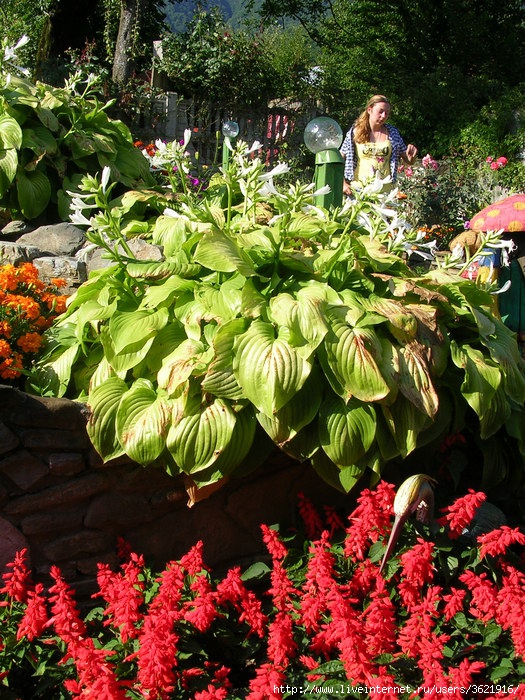
since we plant the host for a long time. then we fill the landing pit according to all the rules - with humus, etc. and you don't have to bother to water with top dressing and that's it
But in the spring and autumn we pour humus under the bushes. well, you can water it with complex fertilizer in the summer. You can fertilize until mid-July, otherwise the host will release more and more leaves and will not have time to prepare for winter.
Astilba
The main thing is to plant in a properly filled hole and you can practically not fertilize. since we divide it every 3-5 years. Astilbes are unpretentious.
However, in principle, astilbe can grow in one place for a long time, up to 15-20 years. To maintain the decorative effect of old plants, you should take care of fertilization annually.
1 top dressing - in the spring after regrowth (nitrogen fertilizers prevail)
2 dressing immediately after flowering or in autumn (potassium and phosphorus - 20-25 g per plant).
Georginaiz EDSR
Top dressing is carried out after the plants have taken root after planting (not earlier than 5-7 days), with an interval of 10 days, after watering the plant properly. Around the "bush" a hole is made 10-12 cm deep, fed, and then immediately the hole is leveled.
1 type of dressing (3-4 times) use mullein infusion (1:10), adding superphosphate and nitrogen fertilizers to it (20 g per 10 l of water).
2 type of dressing 3-4 dressing with superphosphate (50 g per 10 l of water) with the addition of 3-4 handfuls of wood ash. With this care, abundant flowering is achieved and the size of the inflorescences is much larger.
Top dressing is carried out in June and the first half of July,
3 types of dressings in August give only one dressing with potassium sulfate for better ripening of tubers (30 g per "bush").
You should not get too carried away with nitrogenous fertilizers, since the intensity of flowering decreases, the "bush" only gains a large vegetative mass, blooms poorly and forms tubers that are poorly stored. Since September, they stop watering and feeding.
Similar articles
Benefits of perennial plants
The types of work for the care of perennial crops change from year to year. The largest number of leaving falls in the first year of their growth. Planting, weeding, feeding, watering, loosening - all this must be done regularly, giving the plants the opportunity to grow stronger, gain strength and bloom in time.
When caring for peonies, reproduction is done in three ways. The easiest is the reproduction of peonies by dividing the bush, in which the rhizome is dug up from mid-August to mid-September, and then divided so that each piece of the rhizome has at least 3 buds. In this case, the old roots are shortened and new plants are planted in a previously prepared place.
Dahlias
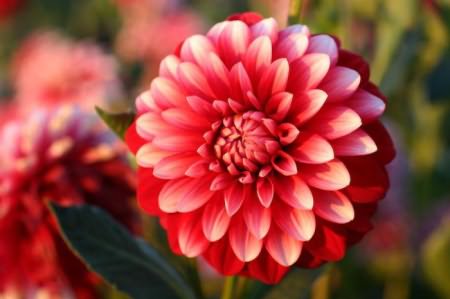
For old peony bushes (8-15 years old), the amount of mineral fertilizers is increased by 1.5 times compared to young ones. Good results are given by feeding with slurry. In this case, it is important not to allow top dressing to get on the plant rhizome.
Turkish carnation

Make sure the soil near the stem is dry before watering the peonies. Watering the peonies should not be frequent, but regularity must be observed.
Phlox

For growing peonies in the garden, well-processed slightly alkaline loams are considered the best soil, the acidity level of such soils (pH) is 6.5.
The most unpretentious summer flowers

The crops are monitored every day, watered or sprayed if necessary. The topsoil should always be moist (not wet!). How to care for peonies when shoots appear? In this case, the boxes are immediately opened and placed in a bright place.
Phlox
Garden chamomile

The third, last, top dressing is done after flowering. For liquid feeding, take a large bucket of water, 30 grams of superphosphate, 30 grams of potassium sulfate. Dry top dressing consists of a bucket of peat or compost 60 grams of phosphorus-potassium mixture or 60 grams of "Autumn" fertilizer. All components are thoroughly mixed and scattered under the plants. With this amount of fertilizer, you can feed from 3 to 4 bushes.
Like any other plant, perennials are susceptible to pest attacks. To avoid unwanted guests in your garden, you need to inspect your plants regularly. Most often found in garden plots are spider mites, scale insects, and also some fungal diseases.
Organic flower food

Do not forget that the stimulation for flowering is feeding with phosphorus. A high nitrogen content stimulates the growth of tops, but delays flowering. For feeding young plants and seedlings, it is useful to add B vitamins to the water for irrigation. Both tablets and vitamins from ampoules are suitable. One ampoule per liter of water.
Beautiful summer flowers are a real decoration of the personal plot. They can be planted along paths, form flower beds or landscape corners. As the practice of many gardeners shows, perennial flowering plants are much more unpretentious to the conditions of care and maintenance, more resistant to adverse weather and climatic conditions and soil than annuals.
Secret materials
Watering should be done more frequently in the first year than in subsequent years. Young plants need constant and even moisture. Watering is best done with small-drop irrigation - this method maintains the desired moisture content, while at the same time preventing a crust from forming on the soil surface.
Using the method of reproduction of peonies by layering, in the spring they put a box without a bottom measuring 50 X 50 cm, 35 cm high on the bush.As the shoots grow, 5 cm soil (humus, peat) is added to the box in layers. The soil in the box must be moist. In the process of development, the peony forms renewal buds and additional roots. From mid-August to mid-September, it is necessary to cut the stems under the new buds and plant them for growing in the nursery.
Mineral fertilizers

In the first year after planting, the most effective are foliar feeding... It is recommended to carry out three foliar dressings with an interval of 10-15 days.
And how to feed and fertilize peonies in order to achieve abundant flowering? If the planting was done correctly, then young plants begin to fertilize from the third year of life. The timing of fertilization, their rates and frequency depend on how fertile the soil is, as well as on the age and phases of plant development.
When growing peonies in the country, preparing the soil for planting, small doses of nitrogenous and phosphorus mineral fertilizers are preliminarily introduced. The best fertilizer for peonies - bone meal at the rate of 300 g per 1 m2. After its introduction, the plants do not need to be fed for 2-3 years.
A little about seedlings and planting

In late March - early April, the boxes are placed on a well-lit windowsill. In winter, when many crops do not have enough natural light, the boxes are supplemented. They are placed on shelves equipped with special lighting lamps.
Produced with seeds. Seeds are sown for seedlings in boxes simultaneously with vegetable seedlings, but you can sow at the end of April in open ground... Of the annual phlox, the following varieties can be recommended for breeding: Twinkling Star, White Phlox, Drummond, Attractive mixture.
These top dressings will ensure a lush bloom of phlox for the next season.
Thickening of plants contributes to the development of rot, fungi, viruses.
In addition to the usual dressing, gardeners also have tricks. For example, not everyone knows that many both flowering and fruit plants respond very well to watering with a yeast solution. And this method of feeding has long been successfully practiced by some gardeners and gardeners.
Summer perennial flowers do not need a seasonal transplant, but grow in the same area from year to year, and caring for them comes down to removing excess shoots that grow by self-sowing, as well as forming a bush, removing faded flowers and dry leaves to maintain a beautiful plant appearance ... Perennial flowering flowers include cannes, irises, golden ball, Turkish carnation, delphinium, water collector (aquilegia), peonies, spray and climbing roses, rudbeckia, phlox, some types of lupins, asters and dahlias.
Perennial pests

When the surface of the land allocated for planting perennials is completely covered by overgrown plants, it is necessary to loosen the soil between them. Simultaneously with loosening, weeding is carried out, removing, if possible, all weeds.
When peonies are propagated by cuttings, two weeks before the flowering of the bush early in the morning, a cutting of a leaf is cut off near the ground, the cut is made with a sharp knife. Take a stalk from the bottom or middle part. An oblique cut is made under the bottom sheet after 1.5 cm, and an upper cut is made above the top sheet after 1.5 cm (the top sheet is shortened by 1/3).
First feeding:
syl.ru
Peonies assimilate nutrients throughout the growing season: at the beginning of growth, plants absorb a lot of nitrogen, during the appearance of buds and flowering - nitrogen, phosphorus and potassium, and when buds are laid - phosphorus and potassium.
Soil for phlox
Before caring for peonies in the country, planting holes should be prepared in advance. This is done in July so that the land in them has time to settle by the time of planting. When digging holes, the topsoil is laid aside, the rest is removed. A mixture of organic fertilizers is introduced into the lower part of the pit. It is good if it is a mixture of rotted manure with compost and peat, 150-200 g of superphosphate or 300-400 g of bone meal and 150-200 g of potassium sulfate.
Fertilizers for phlox
When caring for peonies, you need to constantly monitor the seedlings, water them regularly and moderately, avoiding waterlogging or drying out of the soil.
Good luck in growing phlox!
Watering phlox
In perennial phlox, reproduction occurs by dividing the bush and cuttings. As a preventive measure, it is recommended to spray from a spray bottle with an infusion of pyrethrum, garlic, tobacco chips and laundry soap. These funds are non-toxic and at the same time very effective. If pests have appeared on the plants or you brought them in with new plants and home remedies do not work, you can resort to using purchased chemicals, but you need to work with them carefully, carefully observing the indicated dosage.
Phlox feeding
Some people use beer or homemade instead of yeast bread kvass... For a ten-liter bucket of water, take half a liter of beer or kvass. Such feeding is carried out once every ten to fourteen days.
Summer flowers, the names of which are listed above, can be grown even by a novice gardener. We list the types and features of garden perennials.
An important point in caring for perennials is the mandatory removal of inflorescences after flowering. This preserves the decorativeness of the perennial and, in addition, in some species it can stimulate re-flowering.
No more than 2 cuttings can be cut from one stem. They are placed in water, to which a rooting stimulant is added and left for one day. Then the cuttings are planted in a greenhouse - these are boxes where the bottom layer is formed by 30 cm of earth and 10 cm of sand. Planted at an inclination of 45 °. In this case, the leaves should not be in contact with each other. The planted cuttings are closed and shaded for the first few days. They are sprayed twice a day for two weeks. After rooting the cuttings, the greenhouse is gradually opened. For the winter, the leaves are cut, covered and the plants are left in a greenhouse.
As soon as the aerial part of the plants grows (40-50 g of urea per 10 l of water).
Reproduction of phlox
Reproduction by dividing the bush
If the soil on the site is clayey or loamy acidic, then 150-200 g of crushed slaked lime are added. To the middle of the pit, soil is poured from the top layer, everything is mixed and tamped. The prepared layer will serve as a reserve of nutrients for future plants.If some plants suddenly become ill, then they are removed, and watering is reduced. When the soil surface dries up (watering is performed only along the edge of the box), it is sprinkled with fine dry calcined sand, ash or crushed coal. If it is not possible to stop the spread of the disease, then healthy seedlings dive into fresh soil, which is pre-treated with fungicides (chemicals used to combat fungal plant diseases). Fungicides include bordeaux liquid, sulfur color, etc. They are also used for seed dressing.
Reproduction of phlox by cuttings
Growing phlox
Phlox varieties
Phlox can be grown in open and shaded places. Phlox bloom longer in a shaded area.
For example, summer flowers such as peonies do not like organic fertilizing. Mineral fertilizers are preferable for them.
These are bright summer flowers. Many people mistakenly consider them an annual plant. The fact is that the dahlia cannot be left for the winter in the open field. Experienced gardeners advise to dig up the tubers and store them in boxes with dry sawdust or sand until spring. With the onset of a thaw, when the soil warms up, they are planted in open ground again. Some people advise to keep the tubers wrapped in newspaper, on racks, or in wooden boxes, in a dry place.In this case, you need to apply a full range of mineral fertilizers in the form of a solution when watering. Many plants can burn their leaves if the solution gets on them, so watering should be done carefully, trying not to get on the leaves.However, not all varieties of peonies can be rooted in this way. Second feeding: It is necessary for peonies for the formation of a large vegetative mass and the formation of buds. In the leaves during budding, the nitrogen content is 4.5-6%. It is introduced several times in small doses. All top dressing is best done from early spring to the beginning of flowering (4 times in total). You need to make 10-15 g of active ingredient per plant (ammonium nitrate - 60 g).
How to plant and care for peonies in the country (with video)
Seedling picking.
Always accompanied by their reproduction and more often reproduction occurs by dividing the bush. Bushes 4-5 years old are separated in the spring, but it is also possible in the fall. The bushes need to be divided into several parts and transplanted to a new place every 5 years to rejuvenate. If you do not transplant, then over time, the inflorescences will be crushed. Phloxes should be planted at a distance of half a meter from each other. Transplanting phlox has a positive effect on their flowering - it becomes more generous and lush.
Peonies in the garden: growing and caring for flowers
Growing perennial and annual rudbeckia
When and how to transplant lilies correctly
DelaOgorodnie.ru
Peonies: care and cultivation, planting in the open field, fertilization of peonies, methods of flower propagation
Phloxes love well-groomed, fertile and moist soil, but they do not tolerate acidic, clayey and damp soils. In lowlands, where there is an excess of moisture, phloxes cannot grow normally.
Fertilizer packages are usually marked with three numbers. If your goal is to achieve abundant flowering, you should purchase the highest average fertilizer. The numbers represent the nitrogen, phosphorus and potassium content. In that order. Therefore, while your plants are in the seedling stage, the main task is to help them gain strength for further flowering. This requires organic matter and nitrogen-containing fertilizers. And for abundant flowering, phosphorus helps.
Planting and caring for peony seedlings (with video)
It blooms only in the second year of life. No matter how hard you try, even if you plant the seedlings very early and feed abundantly, in the first year the carnation does not bloom. Some are disappointed and say that this flower is not for them. And the point is just the peculiarities of this plant. You need to be patient, and after a while the work will be adequately rewarded. Turkish carnation blooms and multiplies by self-sowing. After reaching the age of two, it will delight the owners with abundant and variegated flowering for many more years.
You need to know that low-growing perennials come from mountainous or arid regions, where soils are poor in humus, are less demanding on soils. An excess of fertilizers weakens their flowering, in addition, reduces their winter hardiness.
Blooming plants in the garden, flower beds and flower beds with their own hands, floriculture in the country> Unpretentious flowers for a summer residence. How to decorate a flower bed (for the lazy)
40-50 g of carbamide per 10 l of water with the addition of one tablet of microelements.
Phosphorus.
Peonies are planted in the ground at a distance of 50 to 90 cm from each other. A hole for planting a bush is prepared 1-2 weeks before disembarkation. A hole is dug at the site with a depth of 60 cm and a diameter of about 50 cm.The bottom of the hole is laid in the following sequence:
When the seedlings have 1-2 true leaves, they are dived into special cassettes. The size of the cassettes can be 5-8 cm.
On the same topic
Cuttings should be cut. To do this, take a non-lignified shoot or part of it. It should have two pairs of leaves and one internode. Remove the lower leaves, and cut the upper ones in half. You can use leafy cuttings. fresh manure, various rot may occur. The land intended for planting phlox must first be fertilized. If the soil is clay, then coarse river sand, gravel, wood ash, peat, compost are added.
All fertilizers are applied strictly in accordance with the instructions and no more than once every two to three weeks. An excess of nutrients is just as harmful as a deficiency, and leads to the formation of elongated shoots, ugly leaves and flowers, or lack of flowering.
Peony care: watering and feeding flowers
These summer flowers have many colors, inflorescence and flower shapes. Terry or simple - they are equally beautiful and besides bright appearance still have a subtle pleasant aroma. Care consists in periodic feeding, and once every two to three years you need to divide the bushes so that the flowers do not lose their original appearance and color, do not shrink and the stems do not stretch out and do not become naked. but different types perennials need different feeding. If the planting of perennial crops was carried out in fertile soil, then spreading compost between the growing perennials will be sufficient. In this case, there is no need to carry out other feeding. At a large number of fertilizers applied, perennials will begin to develop greenery, and flowering may be less abundant. If the soil under the plantings of perennials is of low fertility, plant feeding is required.
Perennial garden flowers
Third feeding:
Conditions for growing peonies in the open field: soil requirements
This nutrient is best applied at the time of planting. 50-70 g of superphosphate is added to one landing pit. This amount is enough to provide the plant with phosphorus for a year. It should be noted that the effect of phosphorus is manifested only in the presence of nitrogen. On podzolic soils, the phosphorus supply is 20-30 mg per 100 g of soil.
20 cm drainage layer of a mixture of sand and gravel;
Growing peonies in the country: how to fertilize the soil
Watch a video on how to care for peony seedlings in the country:
Peonies are frost-resistant plants, therefore, with the onset of autumn, it is recommended to plant them immediately in open ground. Care and cultivation of peonies is not a very troublesome process, but it requires compliance with certain agrotechnical rules.
Then we plant the cuttings in a moist substrate. High humidity should be maintained in the substrate, which helps the cuttings to harden well. The planted cuttings are shaded and sprayed up to 7 times a day and sometimes ventilated. As a rule, after a month, the stalk starts up roots and takes root well, and already in the fall a well-developed root system is formed and new shoots are formed. Now it can be planted on a permanent growth site.
To fertilize 1 square meter of soil requires 7 kg of peat, about 300 grams of wood ash, about 5 kg of humus or compost. All components are thoroughly mixed, river sand or fine gravel, 30 grams of nitrophoska, 30 grams of potassium sulfate and the same amount of Agricola-7 are added to them. Then the fertilized soil is dug up again. Phlox also like coniferous compost, although it is not available to everyone.
First you need to decide how you want your flower garden to look and loosen the ground for planting. Before planting, it is recommended to add leaf humus, compost, rotted manure and, having shoveled well, leave for two to three days in order to shrink the earth.
- If, in your opinion, your land is bad, that is, the soil is heavy, clayey, you do not need to despair. Irises, golden balls, rudbeckia are absolutely unpretentious to the composition of the soil and to watering. The only thing is that golden balls bloom more finely on infertile soils. And on loose soil with top dressing, flowers are up to 12 cm in diameter.
- Let's talk a little about the perennial garden flowers you want to plant. These are also wonderful garden plants of their kind. In the fall, it seems that their life is over, because the stems, along with the leaves, die off. But this is not the case. In the spring, as if by magic, fresh young shoots appear. If you buy one perennial, in a year you will already have several copies of the same plant. There are plenty of varieties of different garden flowers of perennials, so you can always find something suitable for your flower garden in the country. Among these perennial flowers there are drought-tolerant and moisture-loving flowers, those that need a lot of sunlight, and those that thrive in the shade. You will certainly be lucky to find among them those garden perennial flowers that will delight the eye. When planting perennials, adhere to the following rules.
- Herbaceous perennials are the favorites of the flower garden. They are beautiful, grow in the same place for years and do not require much maintenance. True, provided that the place for them is chosen correctly.
2 tablets of microelements dissolved in 10 liters of water.
Potassium.
20-30 cm layer of the top dressing mixture (compost, humus, 200 g of superphosphate, 100 g of lime, 300 g of wood ash, 100 g of potassium sulfate);
Peonies: how to water, how to feed and fertilize
Top dressing and watering of seedlings.
How to properly care for peonies in order to achieve their lush June flowering, how to feed and how to fertilize the soil correctly, as well as other secrets of agricultural technology are offered to your attention on this page.
Arctic, Thunderstorm, Sunrey, Yelenka, Yaroslavna, Svyatogor, Prince Igor, Inspiration.
Growing phlox Seedlings can be purchased ready-made, or you can grow them yourself from seeds. When buying seeds in a store, it often happens that instead of the desired variety, something completely different from what is promised on the package grows, or a mixture of different varieties turns out to be in a bag of seeds. Sometimes they come across with low germination. To avoid disappointment, it is best to pick them yourself from healthy and robust plants of the right variety.
Irises and rudbeckia grow equally well under all conditions. These summer flowers in the garden of an amateur will delight the eye as effectively as a professional.Plant 3-5 plants - an odd number always looks better.
When you look at the flower beds in most gardens, it soon becomes clear: blooming perennials dominate here! And this is no coincidence: perennial flowering beauties, in contrast to the summer ones, retain their colorful splendor even after several years, and sometimes even decades. In addition, they require much less space than ornamental shrubs. If it is important to ensure long and abundant flowering, then after the central flowers wither, they must be removed immediately, without affecting the leaves. In this case, the new lateral buds will have the opportunity to develop into full force, and then the bush will bloom for a long time and magnificently.
Podzolic soils, as a rule, do not contain enough potassium, which is why 1-2 additional fertilizing is necessary. Add 25-40 g per adult plant. High supply of podzolic soils with potassium - 25-30 mg per 100 g of soil.The remaining place is filled with a mixture of compost and earth.
When caring for peonies, top dressing is applied 7 days after the pick, once a week in the morning or in the evening. Seedlings are watered with a solution of complex mineral fertilizers or alternated with watering with solutions of liquid organic fertilizers. If the leaves of plants have a pale light green color (if this is not a feature of the variety), then complex fertilizers can be replaced several times with nitrogen fertilizers, for example, ammonium nitrate. When caring for flowers, peonies are watered after feeding clean water, especially after the use of nitrogen fertilizers, to avoid leaf burns.
If the planting of peonies will be carried out in August, then they can be sown directly into the ground. If the seeds are sown for seedlings in winter, then in this case a two-stage stratification is artificially carried out. For this purpose, you will need a heating pad with a thermostat in order to adjust the daily temperature fluctuations by switching.
Paniculate phloxes: Festival, Alyonushka, Abundant, Carnival, Scarlet Flower, Success, New, Mashenka, Natasha.
Does not do without watering. Phloxes simply adore him. During the growth and development of buds, watering is simply necessary for phlox. It must be firmly remembered that phloxes need to be watered at the root, but not over the plants themselves, especially cold water... This can provoke such a common fungal disease as powdery mildew. In hot weather, the watering hose can be left under the bush for a while. This method of watering phlox is the most comfortable.Seeds can propagate such summer flowers as primroses, marigolds, chamomile, rudbeckia. Some types of flowers are planted with part of the rhizome or tubers.
Among the perennials, unpretentious to the maintenance, one cannot ignore the garden chamomile. This simple unadorned flower will adorn any front garden. Unpretentious in the content of chamomile easily take root, multiply by dividing the bush. The only caveat is that when planting a part of the bush in a new place, the plant must be shaded for the first few days, otherwise these summer wildflowers will die. Do not make the color scheme in your first flower garden too complicated. For a start - no more than two or three shades. It is very good if one of the colors is white. It goes well with any color and also fits into any composition.
Your flowerbed has already changed: the stunted, nondescript seedlings have turned into strong green bushes, ready to bloom. From June, the most numerous group of ornamental flowering plants begins to bloom - from summer to late autumn, almost all perennials bloom.If peonies are grown for cutting, then you should remove the side buds, leaving one central one on the stem. This is necessary in order for nutrients to flow to him. Then the flower will be lush and healthy.
Agrotechnology for growing peonies in the garden: the formation of a bush
If the soil is of high acidity on the site, then before planting the peonies it is mixed with lime (1 kg of lime per 1 m2). It is not recommended to plant peonies in wet places.
Watering should be abundant, but infrequent.
How to plant peony seeds and care for seedlings? Seeds are sown in small containers in moistened sand and placed on a heating pad. During the month, the temperature of warming up during the day is increased to 30 ° C, and at night it is reduced to 15 ° C. The sand in which the seeds germinate is periodically moistened with a spray bottle. As soon as the roots appear, proceed to the "cold" stage.
Breeding methods for peonies by dividing the bush and cuttings
In addition to perennial phloxes, there are also annuals.
During the summer, it is required to feed phlox three times. If the summer is rainy, then the top dressing is done dry, if the rains are not enough, liquid top dressing is carried out.
After planting in open ground, you should not rush to feed. The plant needs time to grow stronger. When planting perennials, you should initially pay attention to the natural features of the species. Some plants need bright lighting. For example, a dahlia loves sunlight. In a shaded area, it will begin to grow and even bloom, but the flowers will be small, and the flowering will be very short-lived.
Chamomile flowers live a long time both on the root and cut.
After choosing a color scheme, try to stick to it when planting new perennial plants. If you started with yellow and blue, continue working with shades of those colors. Then your flower bed will really please the eye, and not tire it with excessive variegation.
orhide.ru
Perennial flowers and plants for summer cottages. Garden perennials photo
Perennials, like other groups of flowering and decorative deciduous plants, require care. Although caring for them is much easier than for annuals. One of the advantages of perennials is that they do not need to be planted annually. In addition, certain species of perennials in the process of growth form such tightly closed bushes or large clumps that the weeds have no room or opportunity to develop.
Flowers can be cut only from three-year-old bushes, the first two years all the buds are removed, which allows the plant to form a powerful branched root system.This nutrient also plays an important role in nitrogen metabolism.
If, in the area where peonies will grow, groundwater passes close to the surface or the soil itself is of high humidity, then a flower bed should be arranged for them on an elevation or drainage ditches should be laid on the site. Sandy soil is fertilized with humus before planting.
The soil must be allowed to dry out, but not dry out. Also, the surface of the soil must be regularly loosened so that a soil crust does not form.
Perennial care
At this stage, the seeds that have hatched are transplanted into boxes with fertile soil (peat cubes can be used). For them, the temperature is reduced to 5-10 ° C. With the appearance of the first leaves, the seedlings are transferred to a warm place (18-20 ° C).
Growing
First year care
The first feeding is done when the stems grow back. Liquid top dressing consists of 10 liters of water and 2 tablespoons of urea diluted in it. The dry top dressing includes: one bucket of compost or humus and two tablespoons of urea. The components are thoroughly mixed and scattered next to the plants. This amount can feed three phlox bushes.
Plants, whimsical to the bay of the soil, it is advisable to take plots on a hill.
Summer flowers are very fond of organic fertilizers. As a top dressing, you can use compost, leaf humus, horse and cow manure, as well as chicken droppings. Important: the manure should not be fresh, but rotted, bird droppings should be used in very small proportions, dissolving it in water at the rate of about a quarter of a glass per bucket of water.
If you really like a certain plant, know that after a few years it can be dug up and then divided into parts. The longer you communicate with your beloved pet, the better you will know its tastes and tendencies. He will definitely reciprocate your worries - in a few years he will give you the opportunity to increase the amount of planting material. And by planting the same flowers around the garden, you can give it a holistic, harmonious look.
However, if you want to have beautiful and abundantly flowering perennials, you need to take care of them not only after planting, but also during the entire growing season.
When forming a bush, the buds are removed from the plant when they reach the size of a pea. Break off the buds carefully so as not to damage the plant.
Features of feeding and fertilizing perennials
How to fertilize peonies during the growth of shoots? At this time, they are fed with ammonium nitrate (15 g per 10 liters of water.) During bud setting and flowering, soil mineralization is carried out. Take 5 g of potassium salt, 7.5 g of ammonium nitrate and 10 g of superphosphate per 10 liters of water. After the flowering period, the peonies are fed with 5 g of potassium salt and 10 g of superphosphate per 10 liters of water. To get a greater effect, mineral fertilizers alternate with organic or combine them.
Choosing perennial flowers for a summer residence
You can watch a video of planting and caring for peonies here:
When growing peonies in the open field, certain soil requirements must be observed. Peonies prefer loose, permeable soil rich in nutrients, without weeds. One of the necessary conditions for growing peonies is softening the soil with peat or humus. Before planting peonies in open ground, if the soils are sandy, clay is added to them. However, before planting, it is not recommended to put fresh manure in the pits, since an excess of nutrients has a bad effect on the growth and development of plants.
Planting and caring for peonies in the open field begins in the second half of August.
Annual
The second feeding is done during the development of buds on phlox. To do this, dissolve 60 grams of nitrophoska and 30-35 grams of Rossa and Agricola for flowering plants fertilizers in a large bucket of water. This amount is enough to feed three phlox bushes.
Top dressing of white cabbage 
Fertilizing flowers is the key to their long, abundant and violent flowering. It is impossible to get flower arrangements like those in the photo in natural culture. And it's not just the limited volume of the nutrient medium; on a properly arranged flower bed, it can be more than sufficient. The point is that natural life cycle decorative flowers are deliberately distorted in favor of more lush barren flowers to the detriment of fruiting. Even annual flowers are propagated by seeds relatively rarely, and for some flower crops fruiting is generally unacceptable. One of the agricultural techniques that allows you to achieve lush color without risking premature plant depletion is the correct fertilization.

Plant Nutrition Fundamentals
As you know, plants need primarily nitrogen, phosphorus and potassium (NPK) for normal development.
Nitrogen contributes to the growth of green mass to the detriment of flowering and fruiting, but any plants wither from nitrogen starvation. Therefore, fertilizers for flowers should contain a minimum of nitrogen: suddenly there was a hunger for it, additional doses of nitrogen-containing fertilizers are applied as an urgent feeding. The percentage of active NPK in ready-made fertilizer mixtures is usually indicated by 3 numbers, for example. 20-10-20 means 20% nitrogen, 10% phosphorus and 20% potassium. Fertilizers containing more than 20% nitrogen for flowers should be avoided.
Phosphorus and potassium enhance the development of the root system, the resistance of plants to cold weather, diseases and other extreme conditions, so to speak, their general health, a favorable physiological state. The number of flower buds laid depends on the latter, but phosphorus and potassium do not directly affect the nature of flowering. Flowering is provided mainly due to its own reserves of the so-called. plastic substances in the plant. If it has approached the flowering phase exhausted, it will not have a violent color, no matter how you feed it.
Next, plants need micronutrients.; primarily magnesium, calcium, iron, boron, copper, manganese, molybdenum, zinc. If the package of the finished fertilizer contains +7 trace elements, then most likely they are, except for calcium. Its salts are relatively difficult to dissolve, therefore calcium is introduced into the soil by liming or in the form of eggshells. Fertilizers for indoor plants should already contain 16-20 microelements, as for hydroponics, because potted soil is always severely depleted. There are no ready-made mixtures with so many microelements, because from their extended set, it is no longer micro-, but nano-doses that are required, but fertilizing fertilizing with a full set of microelements is easy to prepare with your own hands at home.
The culture of flowers in boxes on the balcony has its own characteristics, which will be discussed below. For now, we note that for balcony flowers, there is enough fertilizer +7, because the soil in the boxes is changed annually or reclaimed in the fall.
How to feed the flowers?
In the method of fertilizing the soil under flowers, 3 types of it should be especially clearly distinguished:
- Refueling the soil, i.e. early saturation of it with difficult to wash out (leachable) nutrients;
- Planned feeding of flowers in order to correct the life cycle and current nutrition of plants;
- Urgent feeding with quickly assimilated fertilizers in case of signs of starvation in any of the elements.
The averaged over many crops requirements for saturation of the soil with the whole complex of nutrients for flower and food crops are shown in Fig. Flowers, which are not allowed into the fruiting phase with a starvation ration, need large starting spring supplies, pos. 1 and 1 'in fig. There is no need to fear the accumulation of nitrates here, because flowers are not eaten. Top dressing before the budding phase or at the very beginning (pos. 2) is necessary for flowering, because the propagation algorithm has already been activated in the plants, i.e. flowering and fruiting.

It is very important not to feed the flowers in the midst of budding, failure 3. Plants will "understand" this as temporary unfavorable conditions that require slowing down the reproduction of offspring, ie. postpone flowering, although the buds will still be laid. But feeding immediately before the blooming of the buds (peak 4) stimulates their amicable blooming and long flowering. This technique is especially effective for home, greenhouse and greenhouse flowers, and for open ground and balcony it can fade under the influence of actual external conditions - prolonged bad weather, heat, drought, etc.
After flowering, it is better not to feed the flowers at all (pos. 5), so as not to encourage them to bear fruit. In the period of preparation for winter (pos. 6) flowers are given 1-2 weak top dressing, so that they do not decide to bloom for the winter looking and therefore do not survive it. Remember, we did not allow flowers to bring their seasonal cycle to the natural end - fruits and seeds. But already in the dormant period, but even before the cold weather, the soil under the flowers must be properly filled with fertilizers, so that from spring there will be something to roam on. Abundant autumn soil filling is especially necessary for renewing perennials with a short growing season (tulips, hyacinths, crocuses, etc.); this is the so-called. ephemeroid plants.
Life Cycles of Flowers
Fertilizers for flowers, containing NPK +7 or +20, are available in different chemical and physical forms, the effect of which on plants can be radically different. The first thing to be guided by when choosing a fertilizer for flowers is the life cycle of plants. According to the duration and nature of their life, decorative flowers are divided into:
- Continuously vegetating - these are mainly indoor (indoor) flowers, except for those requiring a physiological pause (cyclamen, gloxinia, etc.).
- Wintering perennials - in middle latitudes, these are, as a rule, shrubs: roses, lilacs, clematis, etc.
- Renewing perennials with a short growing season are mainly ephemeroids: tulips, hyacinths, anemones, crocuses.
- The same, but with a long growing season. In the winter, the aboveground part dies off, and in the spring it grows from the buds of renewal on the roots (carnations, delphinium, phlox, mignonette, levkoy, and many others) or from tubers (dahlias).
- Annuals - die off completely for the winter, sowing is necessary in the spring. , scented tobacco, brugmansia, etc.
About soil

Most flowers require neutral soil with pH = (6.5-7.5); determine the acidic reaction of the soil with indicator paper. However, for example. and azaleas require acidic soil. This is on the one hand. On the other hand, some fertilizers acidify the soil, while water-insoluble "long-playing" fertilizers saturate only acidic soil with nutrients. dissolve in acids. Therefore, firstly, it is necessary to fill with fertilizers for the winter slightly acidic soil. In the country or personal plot this is easy to achieve by filling the soil with homemade organic fertilizer, see below. After the melt water has melted, the still well-moistened soil is mulched, and strongly acidic soils, this will at the same time provide the flowers with calcium for the season. You can lime the soil of potted indoor or box balcony flowers with finely crushed egg. From raw or boiled eggs - all the same, but the shell raw eggs also slightly stimulates plant growth.
Secondly, some types of soil are lacking in fertile soils. In chernozems, for example, there is little manganese and magnesium; the same applies to loams and brown soils. In such soils, it is necessary in the spring, before the emergence of seedlings, to introduce complex micronutrient fertilizers, simply according to the instructions on the package. It is very difficult to overdo it with trace elements, plants do not take them greedily.
Organic
The best fertilizer for flowers is organic, in order of decreasing effectiveness: goat, sheep, etc. Pig manure is not good, it burns plants and greatly acidifies the soil. In addition to the NPK complex, organic fertilizers contain trace elements and substances that contribute to the synthesis of phytohoromones - flowering stimulants. However, natural organic fertilizers contain too much nitrogen and too little phosphorus; in addition, they all have a sour reaction. Therefore, manure in advance, before the fall, is laid in compost heaps with the addition of phosphate rock (see below) in the range of 20-50 g per kg of manure. In the fall, before the cold weather, plots for flowers are mulched with rotted compost.
Note: organic fertilizer for flowers outdoors can be prepared from food waste different ways, see eg. video below.
Video: homemade organic fertilizers for flowers and other plants
The second area of application of organic fertilizers is growing flower seedlings and improving soil fertility. It is good to grow seedlings of annuals from seeds on peat tablets: they are soaked in water until they swell, pressed into each with 1-3 seeds and spread in bowls or pots without drainage. Watering, preventing the peat from drying out.
You can improve the quality of heavy soil for flowers with sawdust, shavings and tree bark. They are piled up and allowed to peel, then they are introduced into the soil in the fall. In the spring, before planting flowers, add 30-50 g of superphosphate and 15-20 g of ammonium nitrate per 1 sq. m. Light lean (sandy) soils are improved with lake silt - sapropel. It does not require additives, since already contains NPK and all trace elements. Sapropel is introduced from spring until the desired soil structure is obtained: the earth should be crumpled by hand, like black soil. You will have to make a lot, up to half a ton per hundred square meters, if the original soil is loose sand.
Fertilizers and water
By solubility in pure water, i.e. in a neutral environment, mineral fertilizers are divided into:
- Water-soluble - easy to dissolve, but easy and leachable, eg. all nitrate, superphosphate. They are used individually or in combination for instant feeding. It is necessary to bring in strictly according to the norm, so as not to burn the plants, during watering or in the rain.
- Poorly soluble - they dissolve quite well in vessels with water, but they are retained in the soil capillary moisture and therefore slowly leach out. Examples are the majority. They are introduced in the spring before planting / sowing.
- Semi-soluble - dissolve in a slightly acidic environment. An example is precipitate. They are brought in for the winter for digging.
- Poorly soluble - practically insoluble in water. Weakly and slowly dissolve in acid solutions. An example is phosphate rock. They are introduced into live manure or slurry or before winter in combination with acidifying agents (see below).
How to feed the flowers?
For beginner growers, of course, it is advisable to grow a luxurious flower bed or curtain without going deep into the intricacies of agricultural chemistry and plant physiology. More than 20 types are produced only on an industrial scale. Fertilizers chemically interact with each other and with the soil. Sometimes even an experienced agronomist finds it difficult to calculate how much to apply for a given crop on a given specific soil.
Nevertheless, beginners can be given recommendations on how to fertilize flowers without having to worry about manuals and calculations. One of the latest findings in the field of small agricultural chemistry - EM composting - will help in this. What it is, see below for more details, but for now we will assume that we already have his products. We will also try to do without manure, which is difficult for a city dweller to access. And then, when the fruits of labor appear in all their glory and there is an understanding of how they live, they can, it will be easier to understand the nuances of agro-science.
In the garden and in the flowerbed
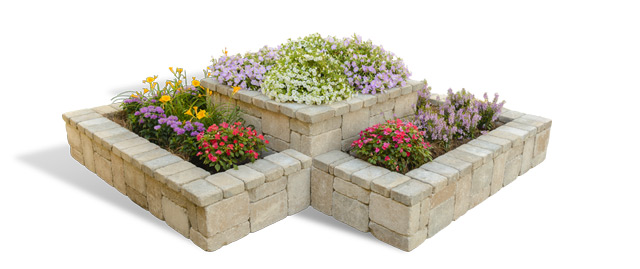
Fertilizers for garden flowers must, above all, be inexpensive. There are a lot of dry mixtures and ready-made solutions in NPK +7 bottles, but even for a small flower bed, purchasing them in such forms will cost a pretty penny. Therefore, outdoors, it is better to use complex organic and mineral fertilizers. Trace elements in open ground for plants, as a rule, are enough, and if necessary, they can be given additionally.
So, starting from the middle of summer, we cook humus with the help of an EM composter. In the fall, we mulch the trunks of wintering perennials with it. In general, EM composting of humus gives little, and it will not be enough on the area under renewable perennials. There you need to add precipitate in a mixture with potassium chloride 1: 1 at the rate of 25-30 g per sq. m, and sprinkle with humus evenly on top. Potassium chloride will acidify the soil. For annuals, the soil is prepared in the same way, but it is carefully dug up. The mineral mixture is applied at 30-40 g / sq. m.
Note: on peaty, podzolic, highly fertilized and other acidic soils, it is possible to introduce cheaper phosphate rock instead of precipitate.
In early spring, as soon as the melt water recedes, the acidity of the soil is checked. The excess is neutralized by liming, and now it is necessary to acidify the basic (with an alkaline reaction) soil, because all nitrogen fertilizers are readily soluble and nitrogen could be leached out during the winter. Its excess before the beginning of budding will not knock down the color.
To normalize the reaction of the soil, it is introduced (composition 12-12-12) at a rate of 20-30 g / sq. m. Flowers are fed with the same fertilizer 2 weeks after planting, when they take root well. "Exciting" top dressing when pecking the first buds and at the very beginning from opening, the petals barely cut from the top, they give already nitroammophos (17-17-17) at 30-40 g / sq. m. To accumulate vitality before winter, perennials once a week or two feed diammophos (10-26-26) for 15-20 square meters. m. The excess of phosphorus and potassium over nitrogen will better prepare the flowers for winter; in addition, diammophoska contains trace elements, which flowers have already eaten from the ground over the summer. Well, at the end of the growing season, we refuel the soil of the flower garden for winter.
How is EM composting?
This is the fermentation of raw (not boiled!) Food waste to obtain a complete organic fertilizer + physiologically active liquid, EM concentrate. A diagram of the EM-composter device and the procedure for working with it are shown in Fig. the best way using EM products - as a starter culture for making humus from garden compost; instead of 2-3 years, in this way, ready-made humus is obtained in 2-3 months.

The primary filling of the EM composter is done according to option 2, adding a handful of garden soil to the EM bucket. Then, 10-20 ml of EO liquid, option 1 is used as a seed. Potato peelings, cabbage stumps and stalks of table greens, beet tops, tomato columns, peel of any fruit, incl. bananas and citrus fruits, drunk tea, coffee grounds... If the EM composter is away from home (say, in a shelter under a canopy), you can lay onion skins and fish giblets. They will give a lot of substances useful for plants, but at first ambergris shibanet - just hold on. On the other hand, finished EM foods should smell like damp earth; a stench is a sign of worthlessness.
A small EM composter can be made from a couple of bottles, see pic:

The load should be pierced at least once a day 2-3 times to the cork with a sharpened stick for aeration. This device does not produce EM compost, as the contents settle, waste and earth are added alternately. EO concentrate is diluted with water at 1:30 and potted flowers are watered with this fertilizer every 2-3 weeks.
Note: complete organic fertilizers for pot and container (box) flowers can be obtained from food waste and in other ways, see video:
In pots and on the balcony
In the absence of organic matter or opportunities for its preparation, indoor and balcony flowers are fed with ready-made complex fertilizers. The price does not play a big role here (literally drops of concentrate go away for 1 watering), but the complex fertilizer for home and balcony flowers should hold firmly in the ground in order to resist leaching during overfilling and, for a balcony, from rain. Judging by the statistics of purchases and reviews of florists, the following proved to be the best for feeding pot and box flowers:

Ambulance
In a potted flower culture, the following is sometimes observed: an analysis of the soil for nutrition and granulometry gives a picture - poke a shaft, the tarantass will grow - and the flowers wither. This means that the roots in a cramped space have lost the ability to assimilate nutrients. This phenomenon is to some extent similar to the notorious disease of the Stalinist and Hitlerite camps - pellagra. In this case, most often you can save flowers by watering with one of the fertilizer-stimulating compounds:
- 30 g of bakers are infused in a liter of water. Pour with 1% solution of infusion (10 ml from a medical syringe per 1 liter of irrigation water). Plants "draw out" cytokinins and B vitamins.
- Wheat starter - soak a glass of wheat grains and leave in a warm place for a day. Add 1 tbsp. l. sugar and wheat flour until sour cream is thick, cook over the lowest heat, avoiding the smell of burning, 20 minutes. Better to steam for half an hour in a water bath. Cool, cover with gauze or a piece nylon tights and leave in a warm, dark place until sour, until bubbling. 1 tbsp. shake a spoon in a liter of irrigation water, water the flower. The active principle is phytohormones.
- Succinic acid (sold in flower shops), 5 g per liter of water. It is capable of literally pulling out the most whimsical plants from the other world, but repeated application to the same specimen is permissible no earlier than 5 years later.
After "resuscitation" with these preparations, when the plant comes to life, you need to wait a month and completely transplant the flower into a large bowl and fresh soil, while removing rotten and dead roots. A month later, the revived plant can be fed with complex fertilizers. And, most likely, the former almost deceased will bloom in a way that has never bloomed before.
Note: do not overfeed with nitrogenous fertilizers - this only contributes to the growth of green mass and low flowering.
GEYHERA
You don't have to feed for a year or two.
1 top dressing in the spring during the period of active growth with complex fertilizer.
2 top dressing in late summer or autumn before wintering - potash and phosphorus fertilizers.
DELPHINIUM
When the first leaves appear - liquid organic fertilizers (mullein solution (1:10) or mineral fertilizers with a predominance of nitrogen.
Then - top dressing before flowering - a full complex mineral fertilizer.
3 top dressing - at the end of flowering - only potash and phosphorus fertilizers (50 g / m2), which will ensure good seed maturation and the formation of renewal buds.
RHODODENDRONS
In early spring, scatter 20-30 grams of such a mixture over the snow: 40 grams of ammonium sulfate and 20 grams of potassium sulfate, 20 grams of superphosphate - mix. Do the same dressing before and after flowering.
In late autumn - phosphorus-potassium fertilizing.
Note: do not use potassium permanganate, urea, chlorine.
LILAC
In the spring - a slight introduction of nitrogen, after flowering - phosphorus-potassium fertilizing. It responds well to the introduction of ash (at any time) and dolomite flour (in autumn).
Narcissus, hyacinths, crocus
In the first year, you do not need to feed.
In spring, on seedlings - nitroammofosk - 30 g per sq. M. You can use the Kemira complex fertilizer by dissolving a tablespoon of fertilizer in 10 liters of water.
The second time feeding in the phase of the beginning of the peduncle emergence - with the same composition.
The third time - in the budding phase - with nitrogen-phosphorus-potassium.
During flowering - double superphosphate (20 g) and potassium sulfate (30 g).
Note: Do not use urea, liquid manure and too much nitrogen. They respond well to the use of ash. The use of a special fertilizer for bulbous plants will greatly facilitate this laborious work.
IRISES BEARDED
Spring top dressing directly on the snow with granular nitrogen - potassium fertilizer.
After two to three weeks (budding period) - nitrogen-phosphorus-potassium ratio 1: 2: 3. After the end of flowering - phosphorus-potassium fertilizer.
JASMINE (CHUBUSHNIK)
It is unpretentious, but it is advisable to spend at least 2-3 feeding per season (until August 15) with mullein infusion.
During flowering, it is advisable to feed jasmine once every 10-12 days. In 3 liters of water, dilute 1 teaspoon of "Agricola for flowering plants", or 1 tbsp. l. "Effektona DC" (for home flowers), or 1 tsp. "Agricola for Ornamental Plants". You can alternate these fertilizers.
Before flowering, the plant is sprayed weekly with the “Bud” preparation (1 g per 1 l of water).
HYDRANGEA
Hydrangea is a plant of acidic soils (pH - 4.5–5), therefore, ash and lime should not be added to the mixture.
In the spring (per 1 square meter of soil), at the beginning of plant growth, add:
20-25 g of urea, 30-40 g of superphosphate, 30-35 g of sulfuric potassium.
During the budding period:
60–80 g of superphosphate, 40–45 g of potassium sulfate.
At the end of summer, for each shrub:
15–20 kg of rotted manure or compost.
TUYA
The first feeding is carried out only after two years. In spring - a complex fertilizer, for example, "Kemira-universal", at the rate of 50-60 g / m2.
You can feed with organic fertilizers (infused two-week-old mullein in the amount of 2 - 3 liters per plant up to 2 times a season).
Highlights when feeding plants.
Excess nitrogen in the second half of summer causes fattening of plants and their death in winter.
The dose of a single application of fertilizers should be no more than 60-90 g per sq m. For plants of the first year of life, only 40-60 g of fertilizers per 1 m2 are applied.
It is important to remember that exceeding the dosage is dangerous for plant rhizomes.
Fertilizers should be applied around the periphery of the plant circle.
Successful plantings, ideas and harvests!
Article author: Love
When copying the text, please indicate the address of our website.


